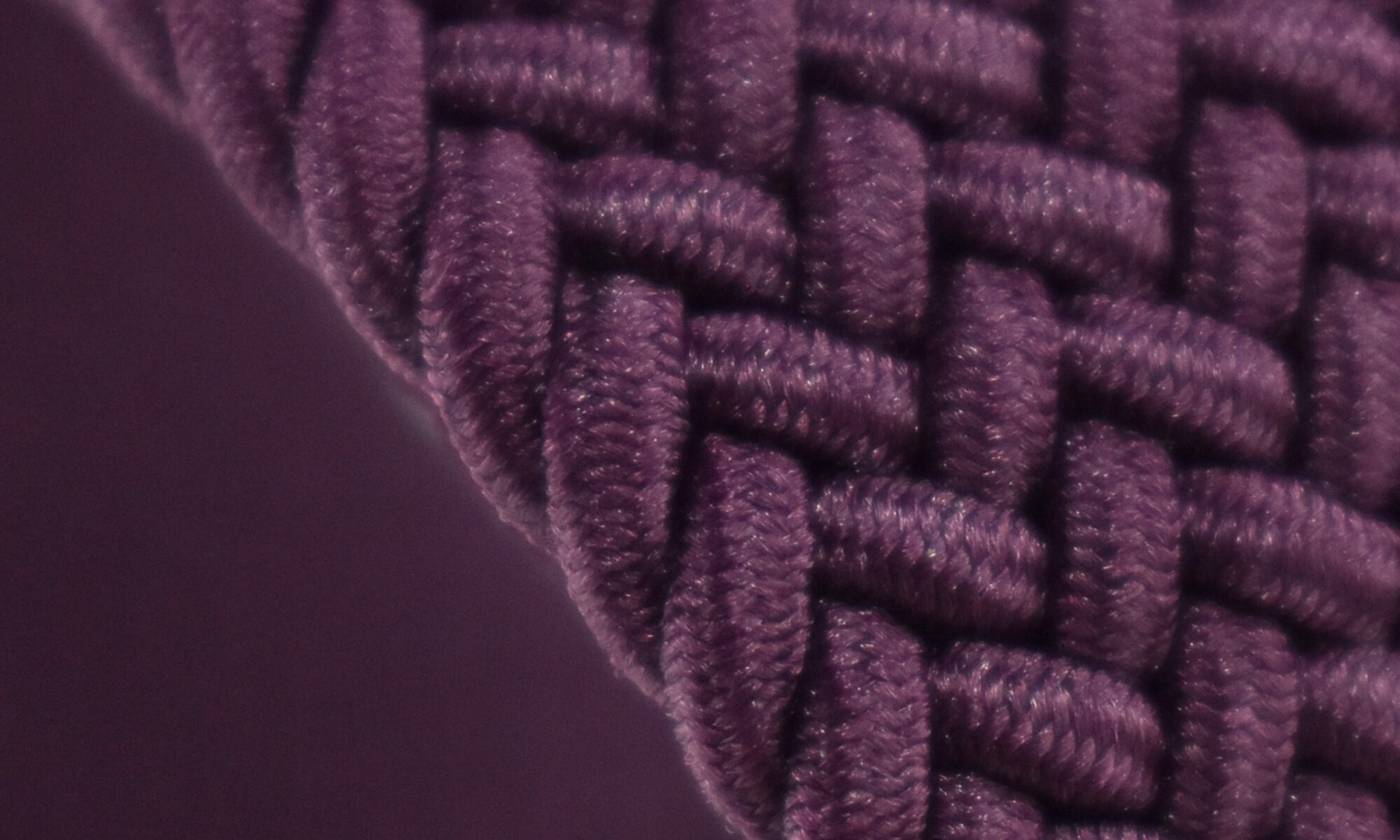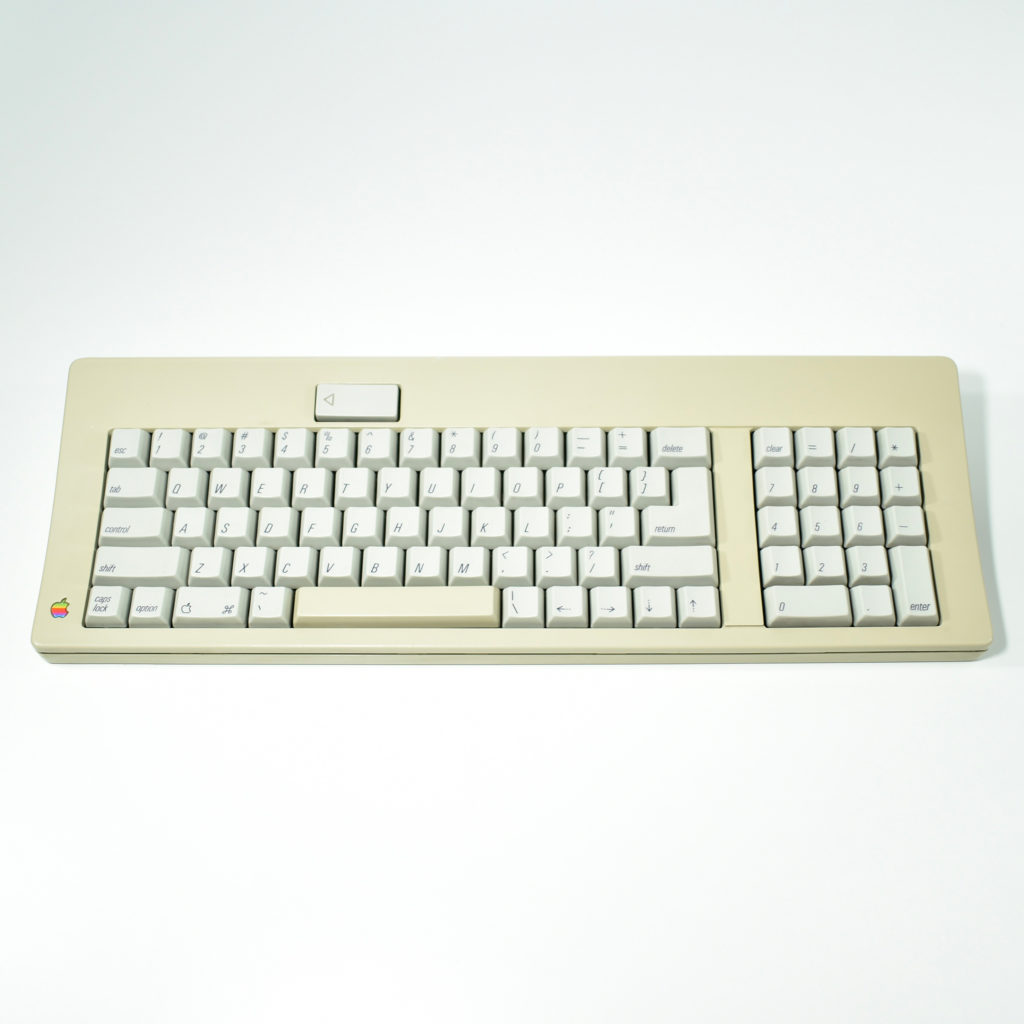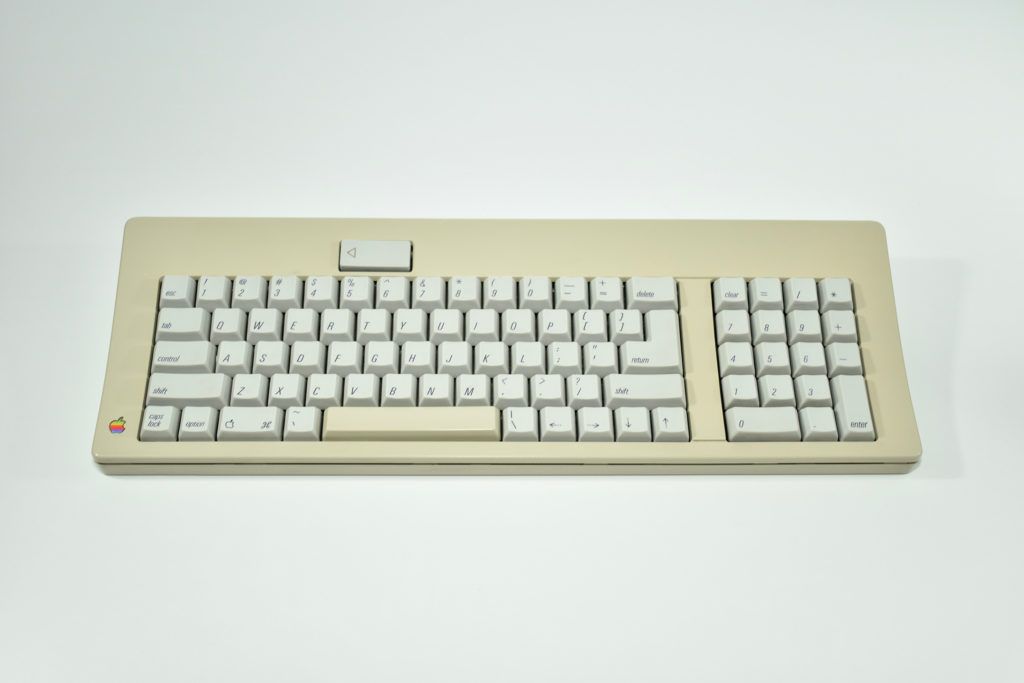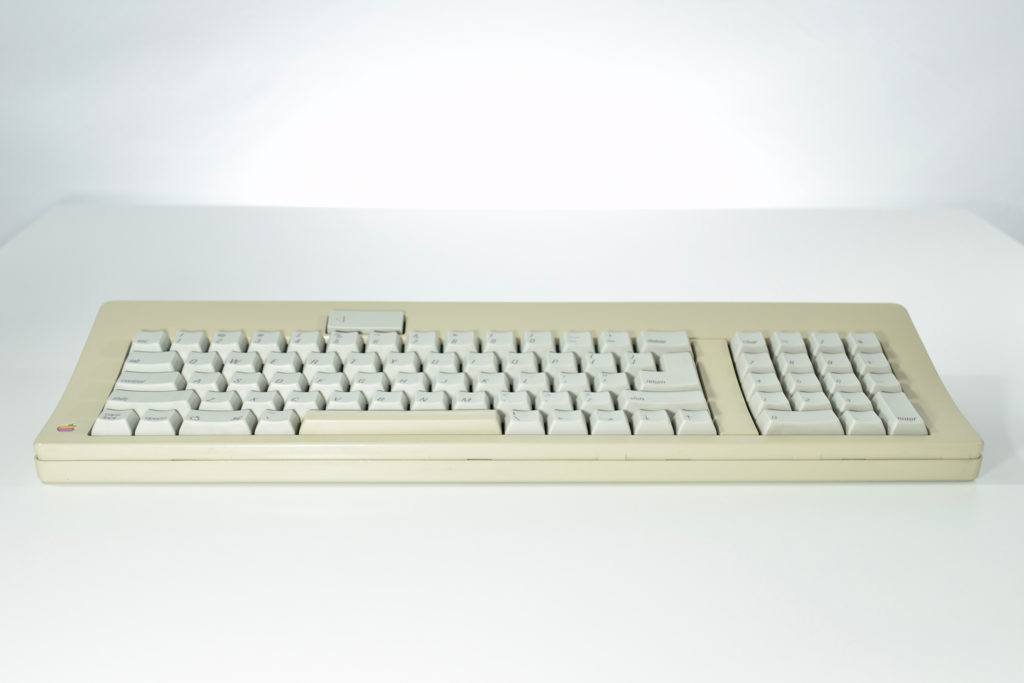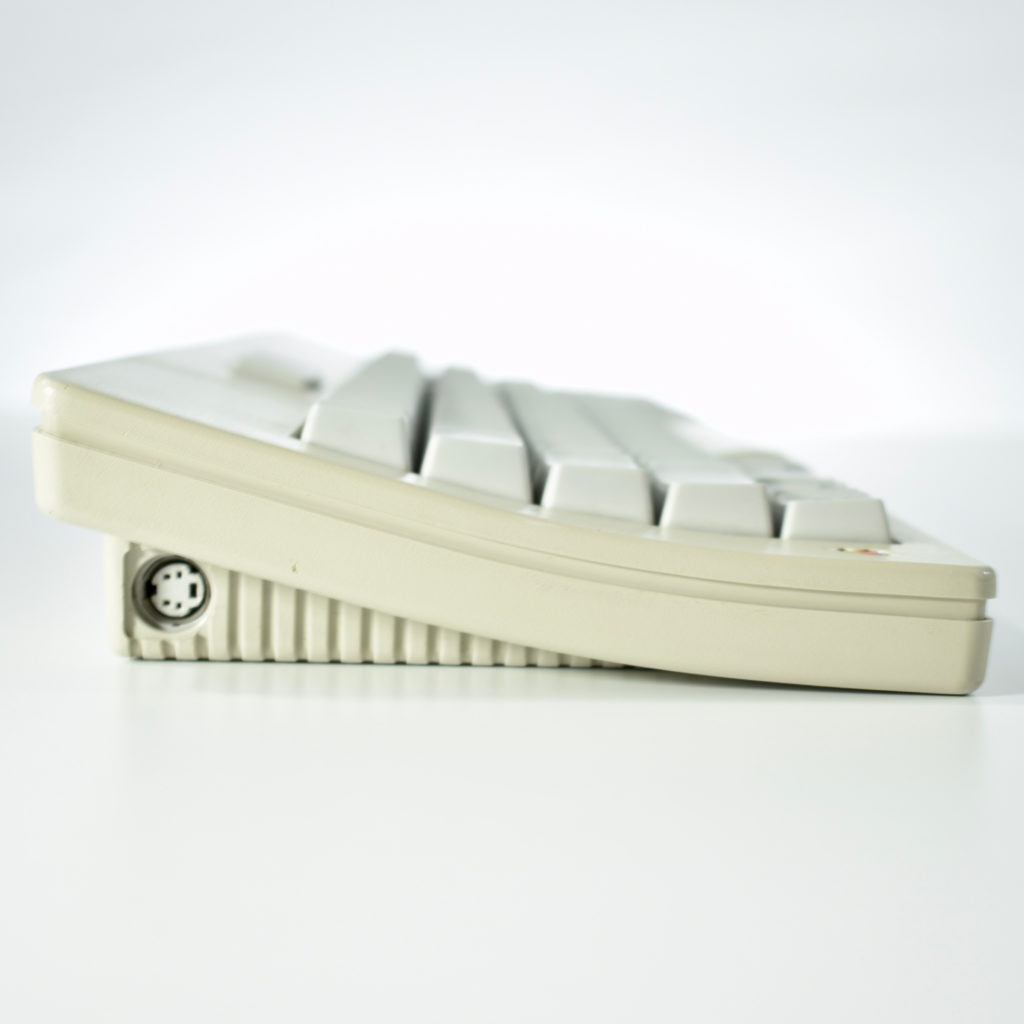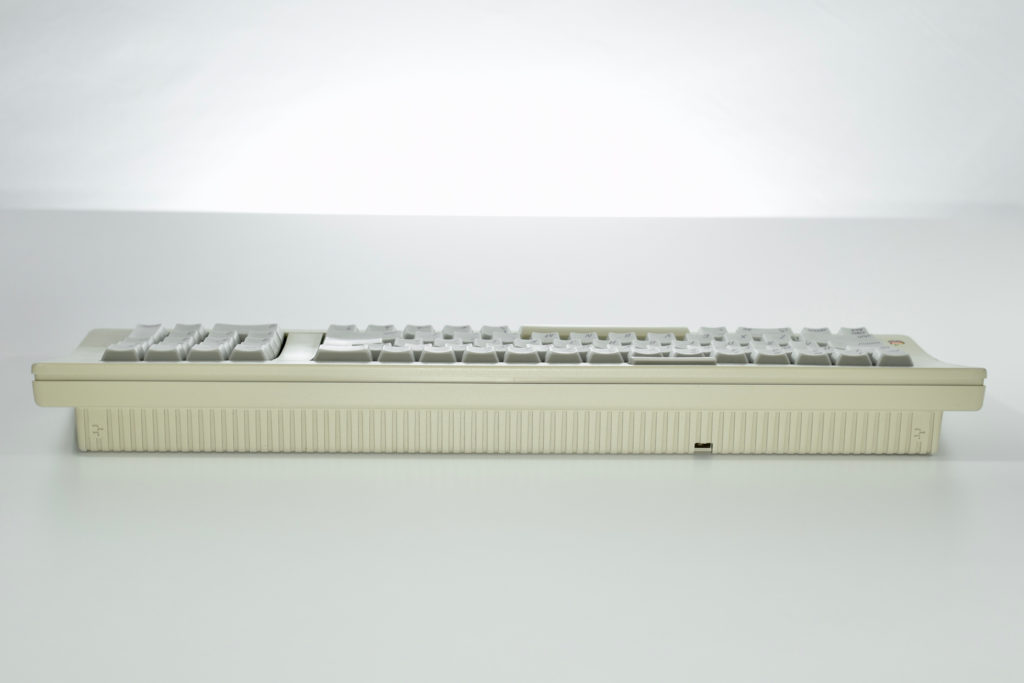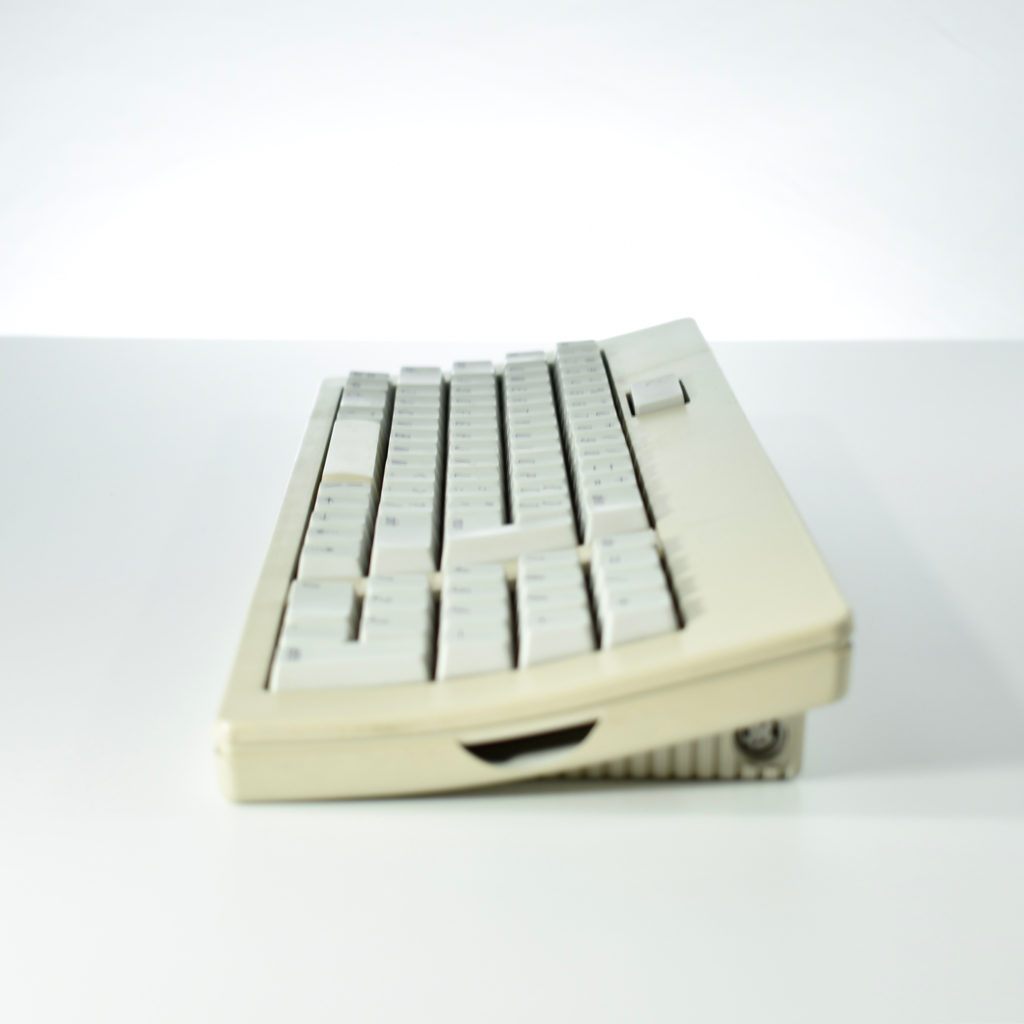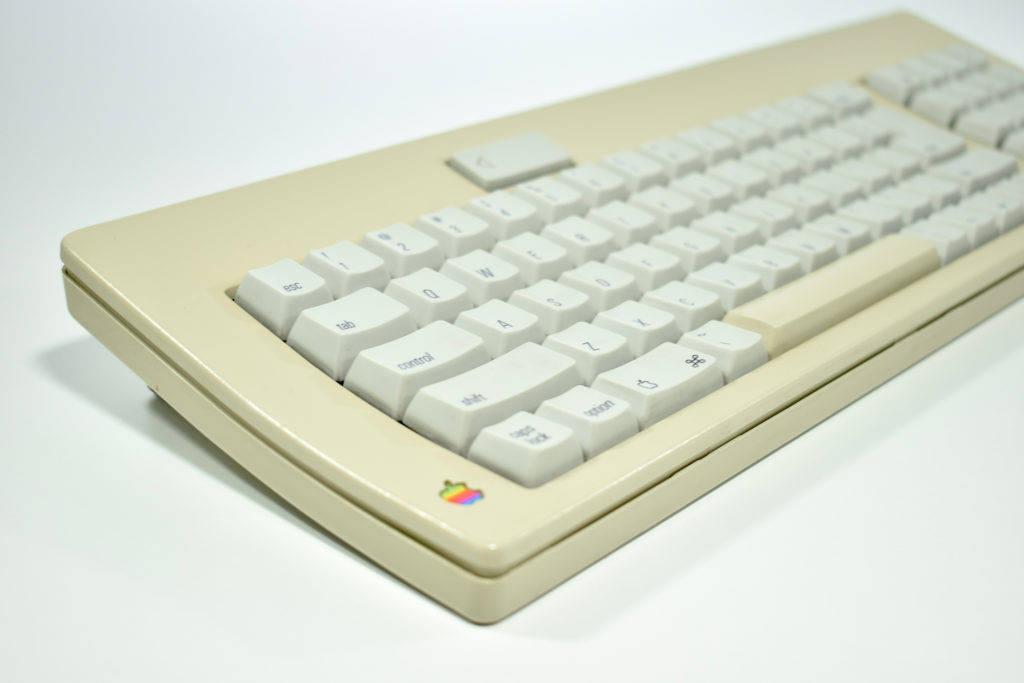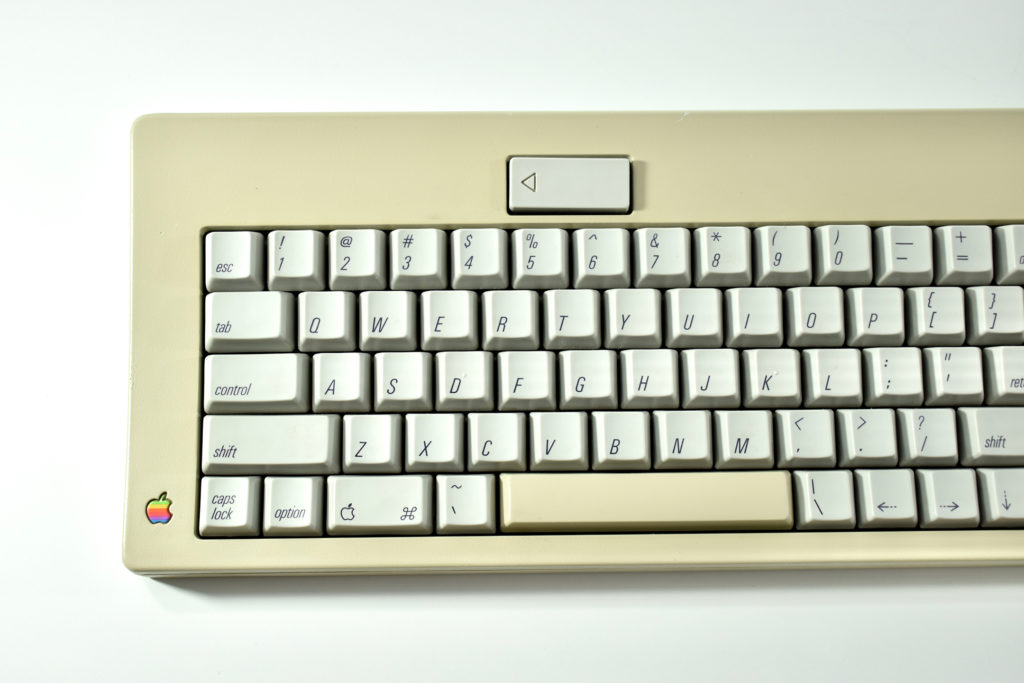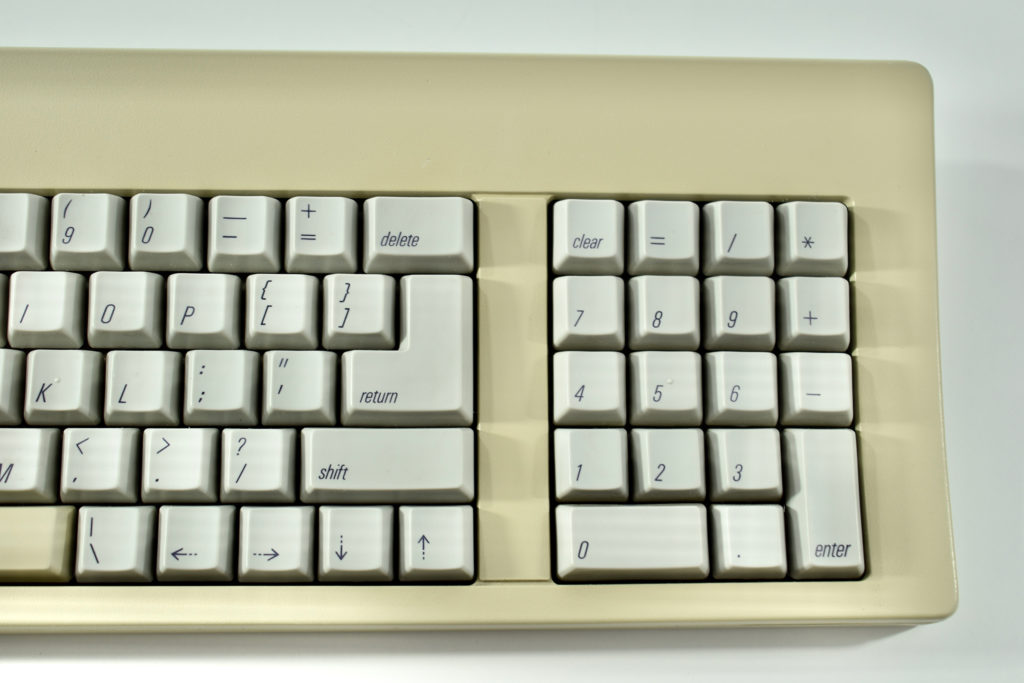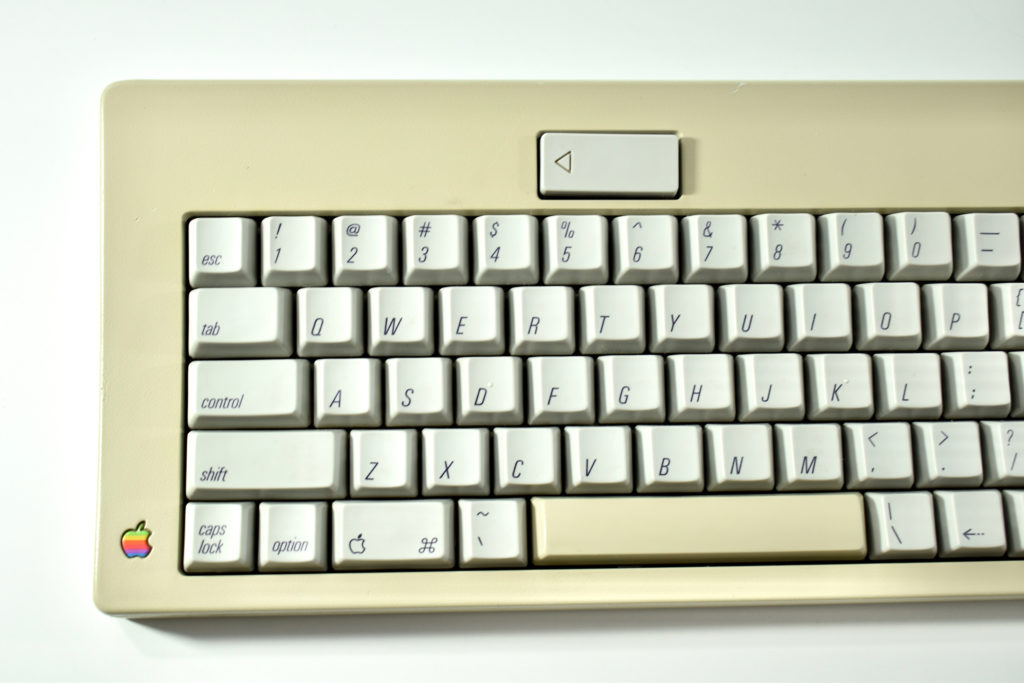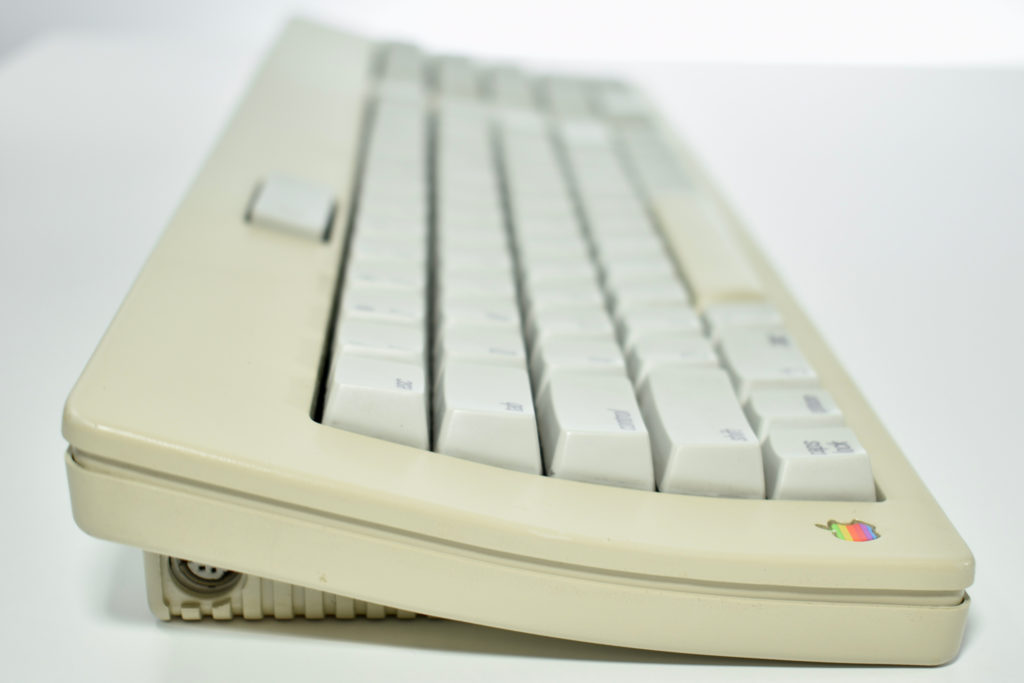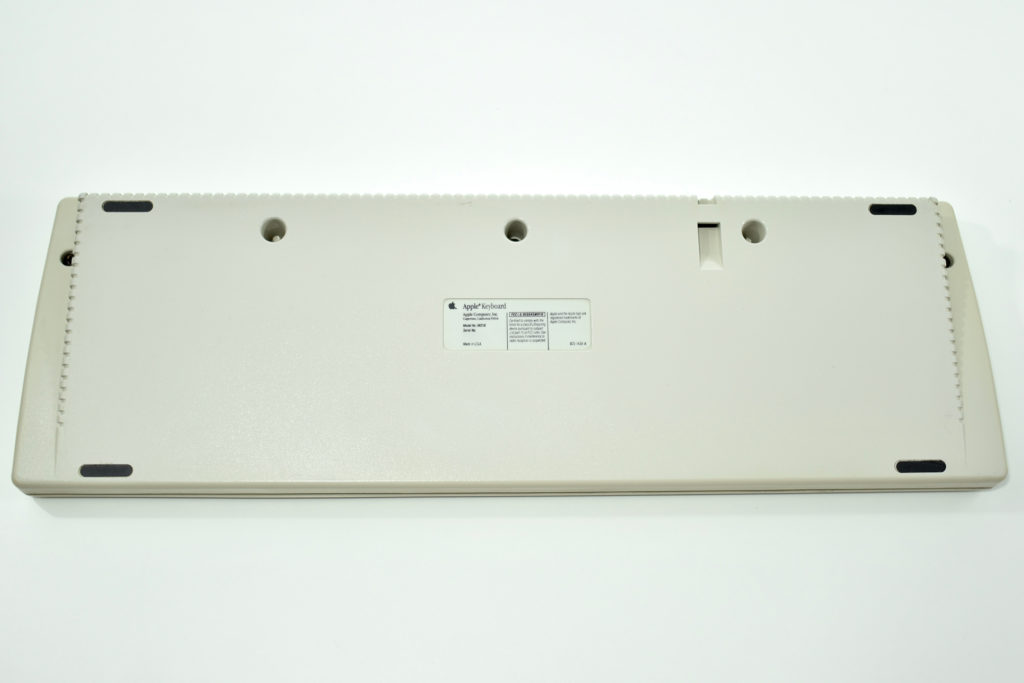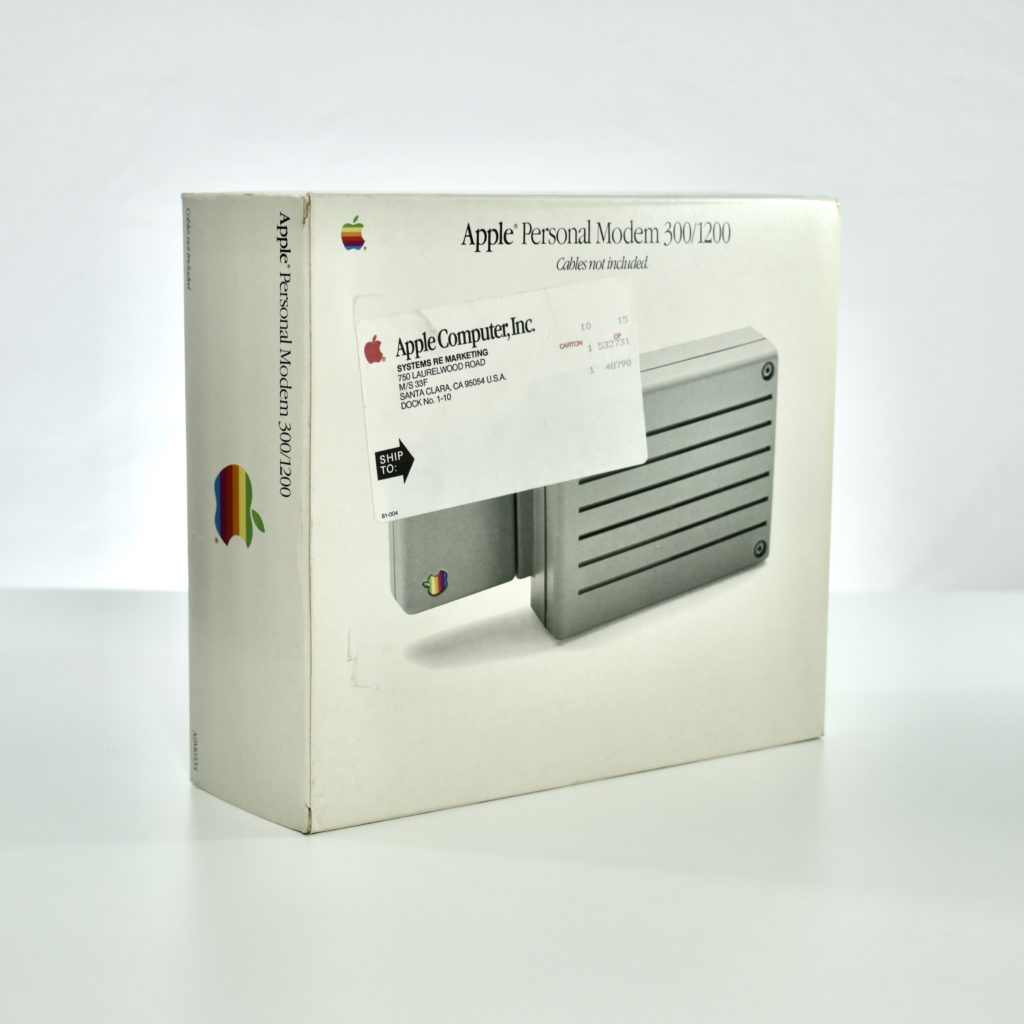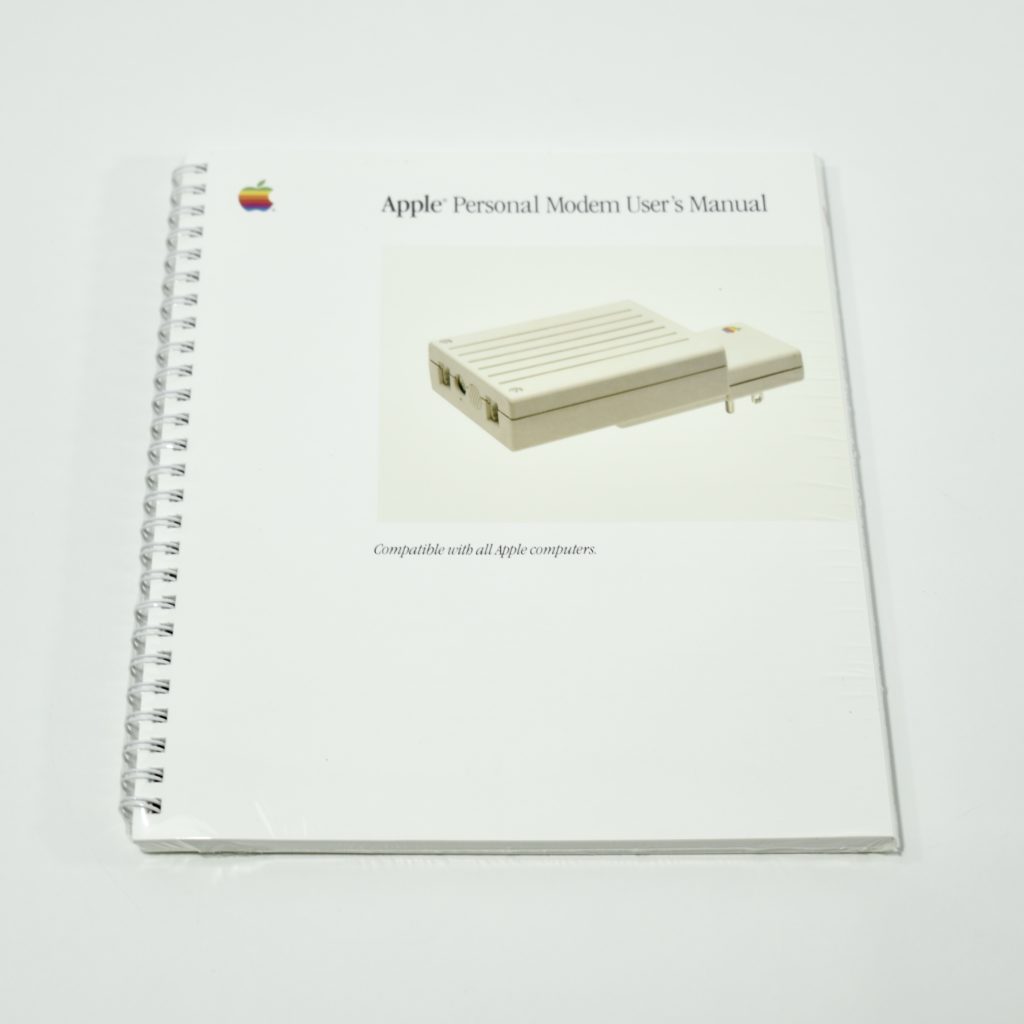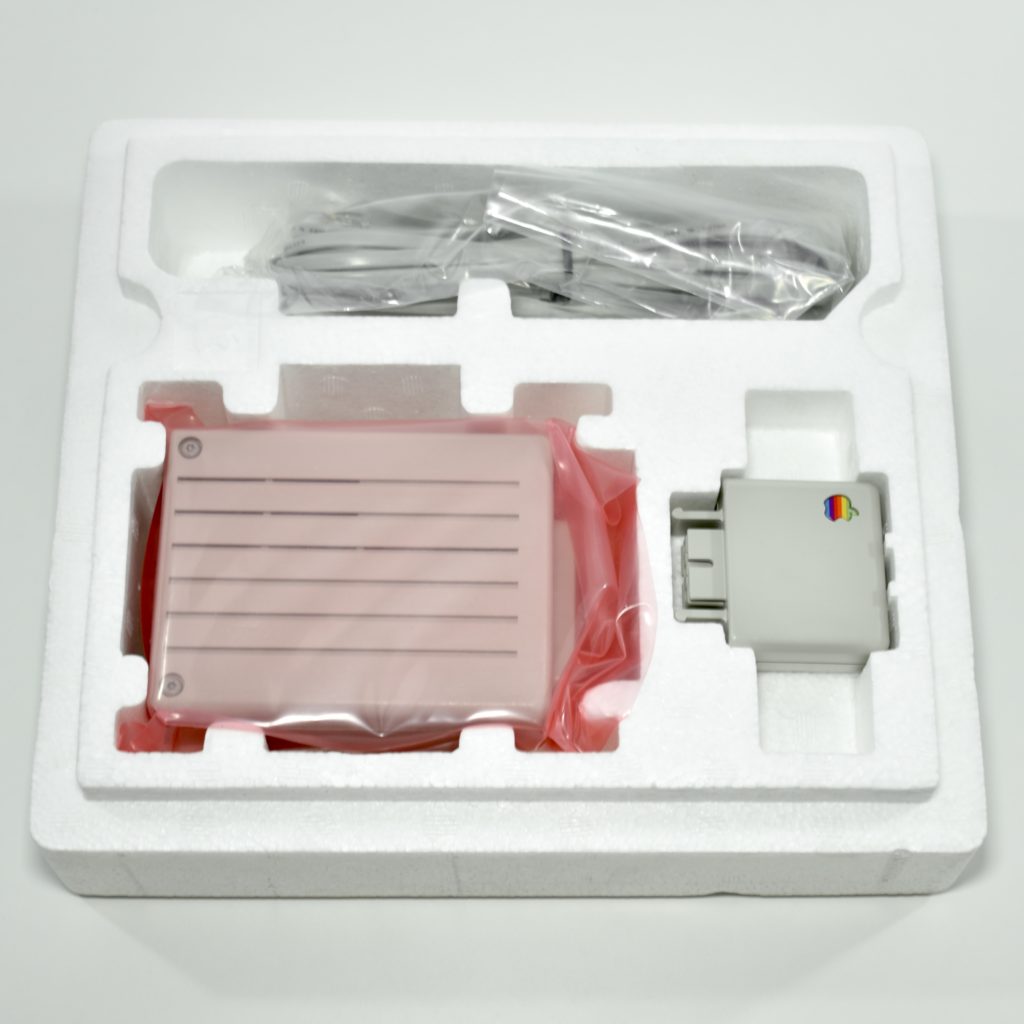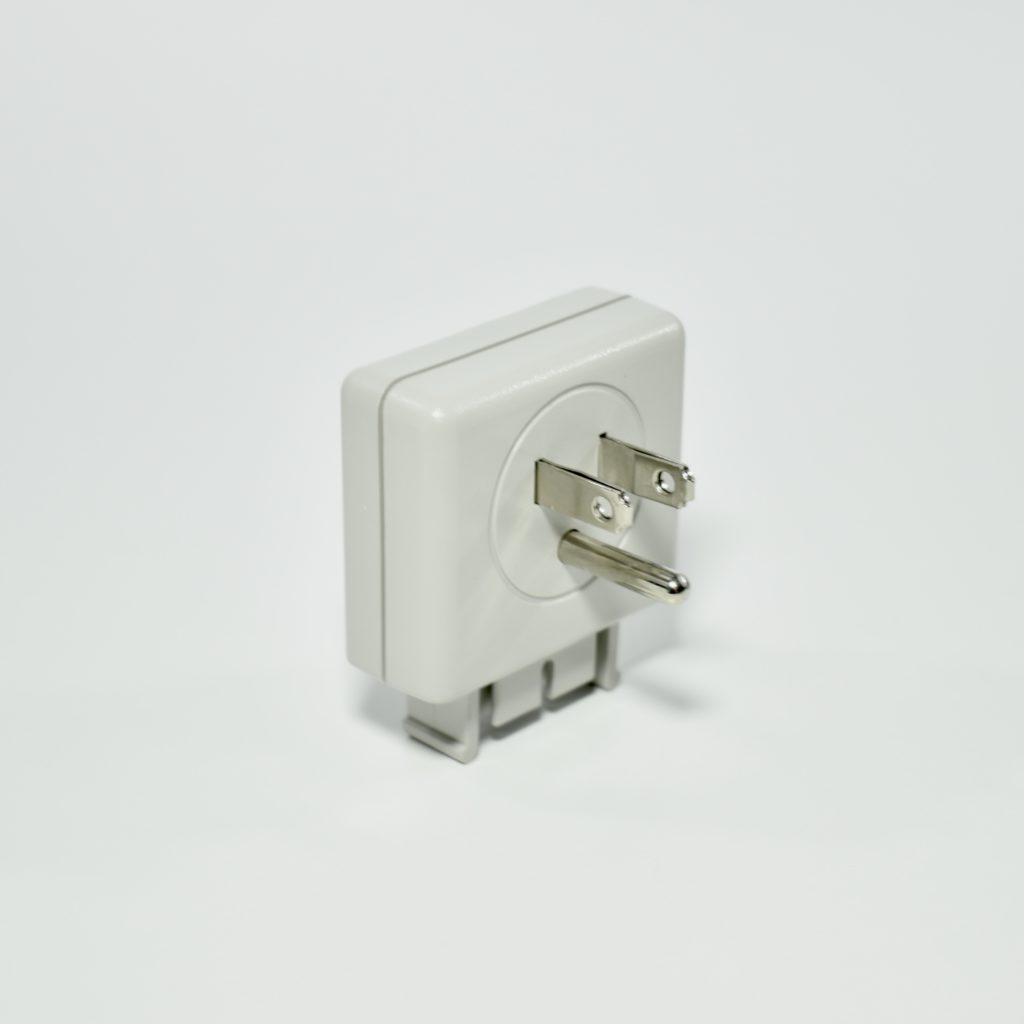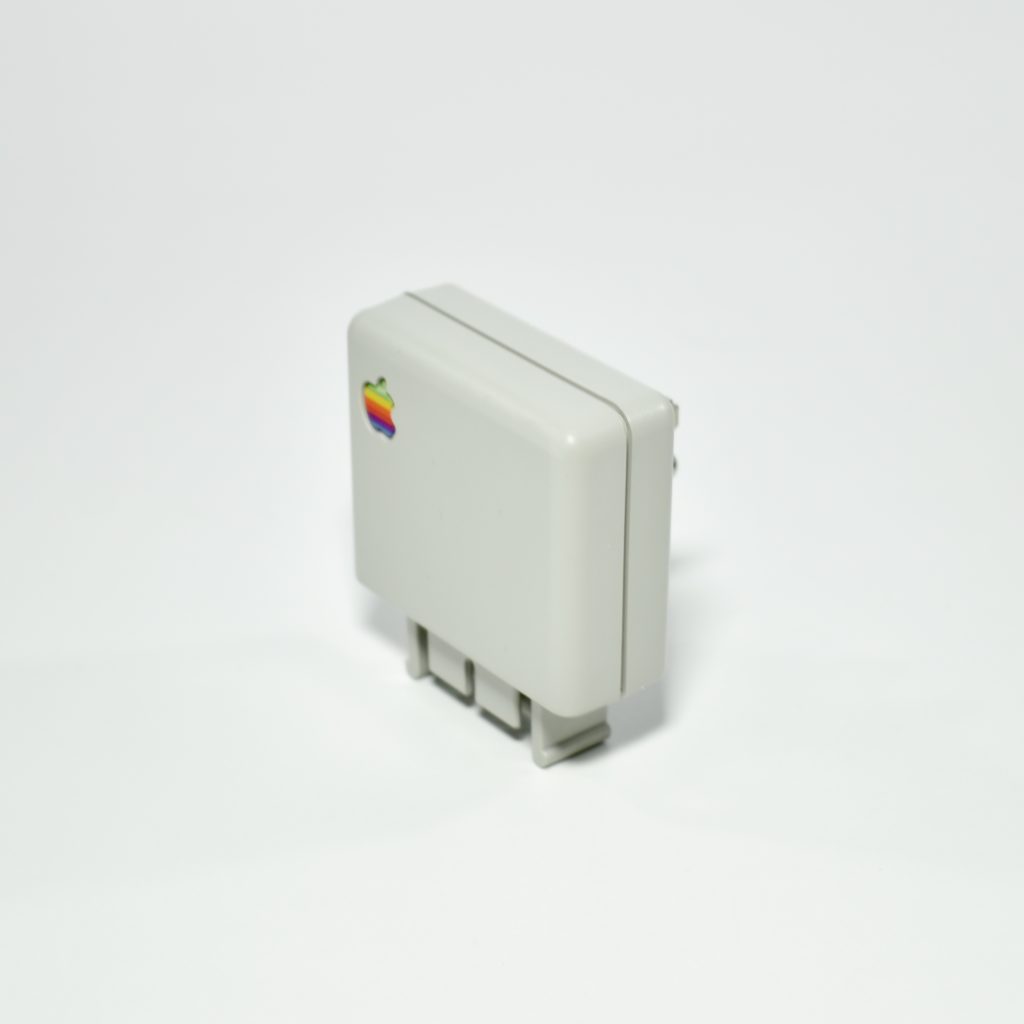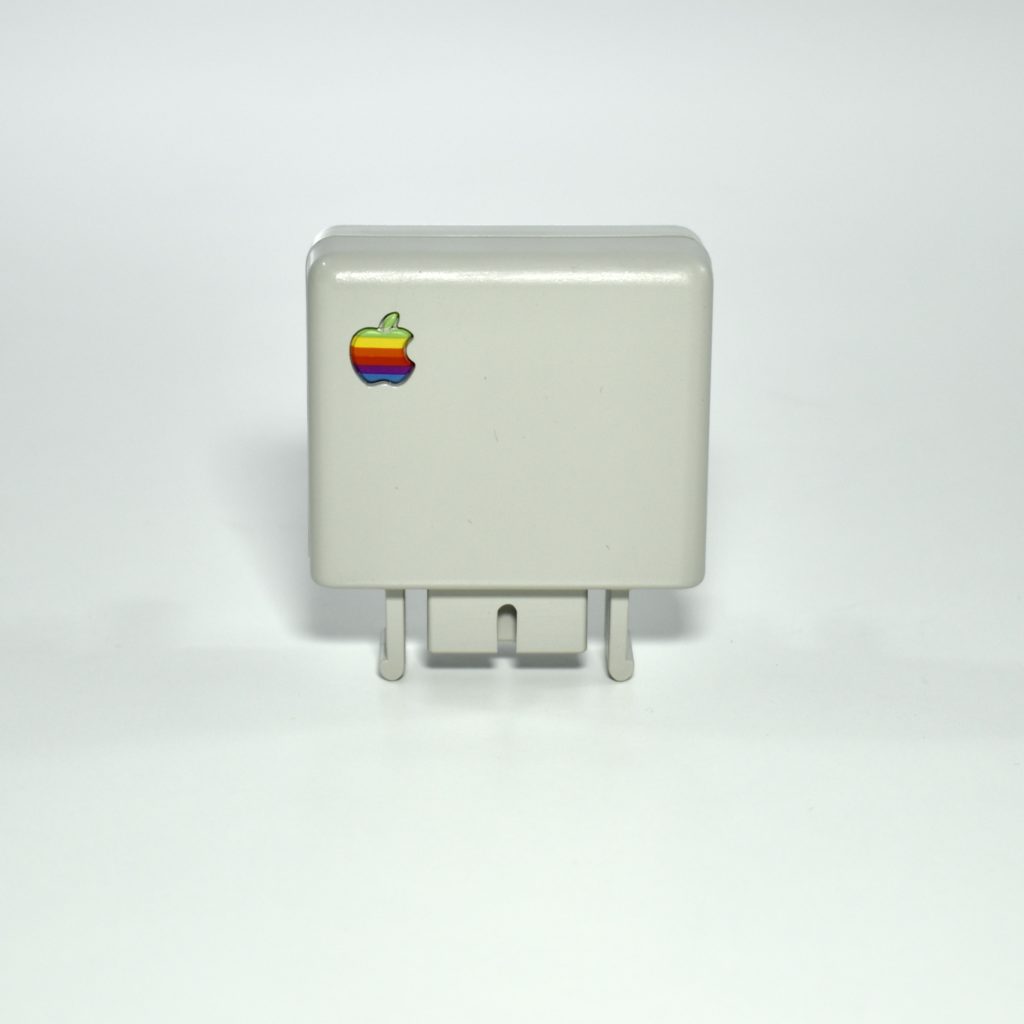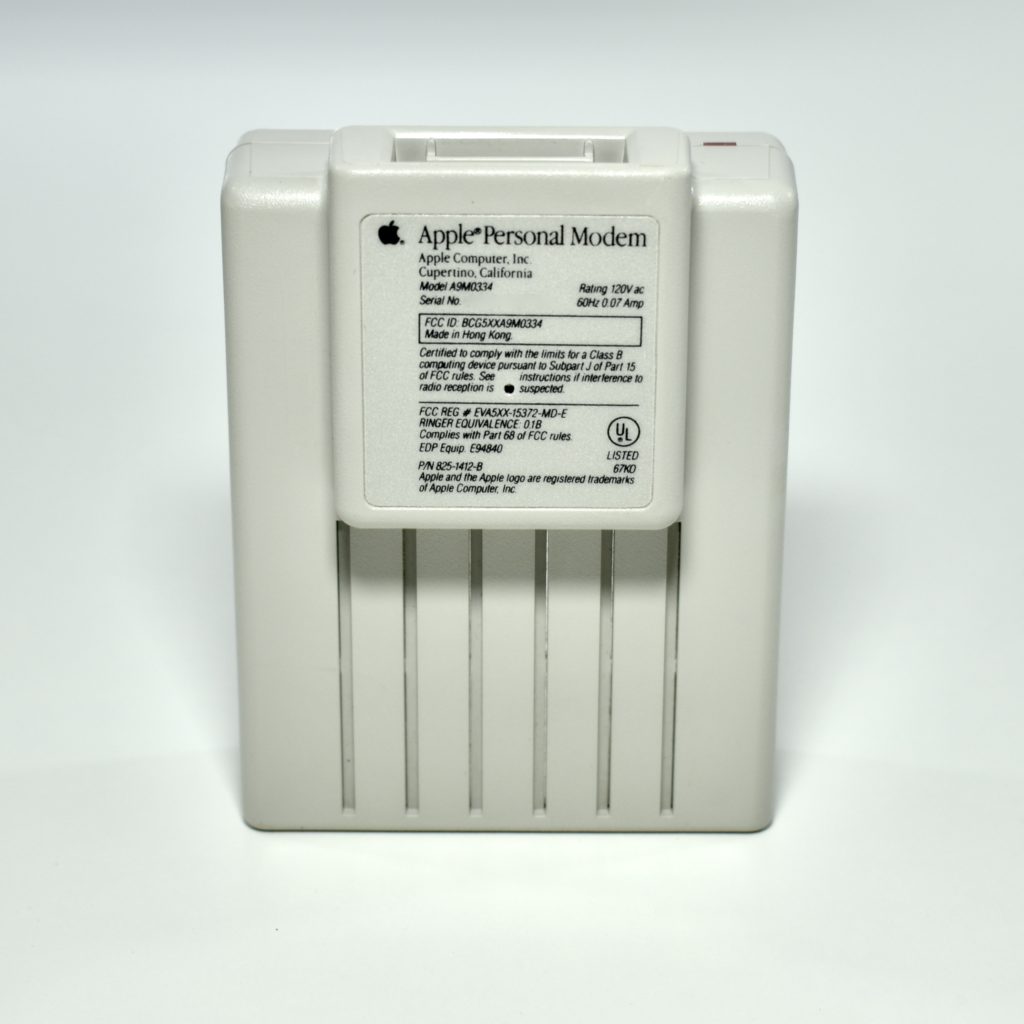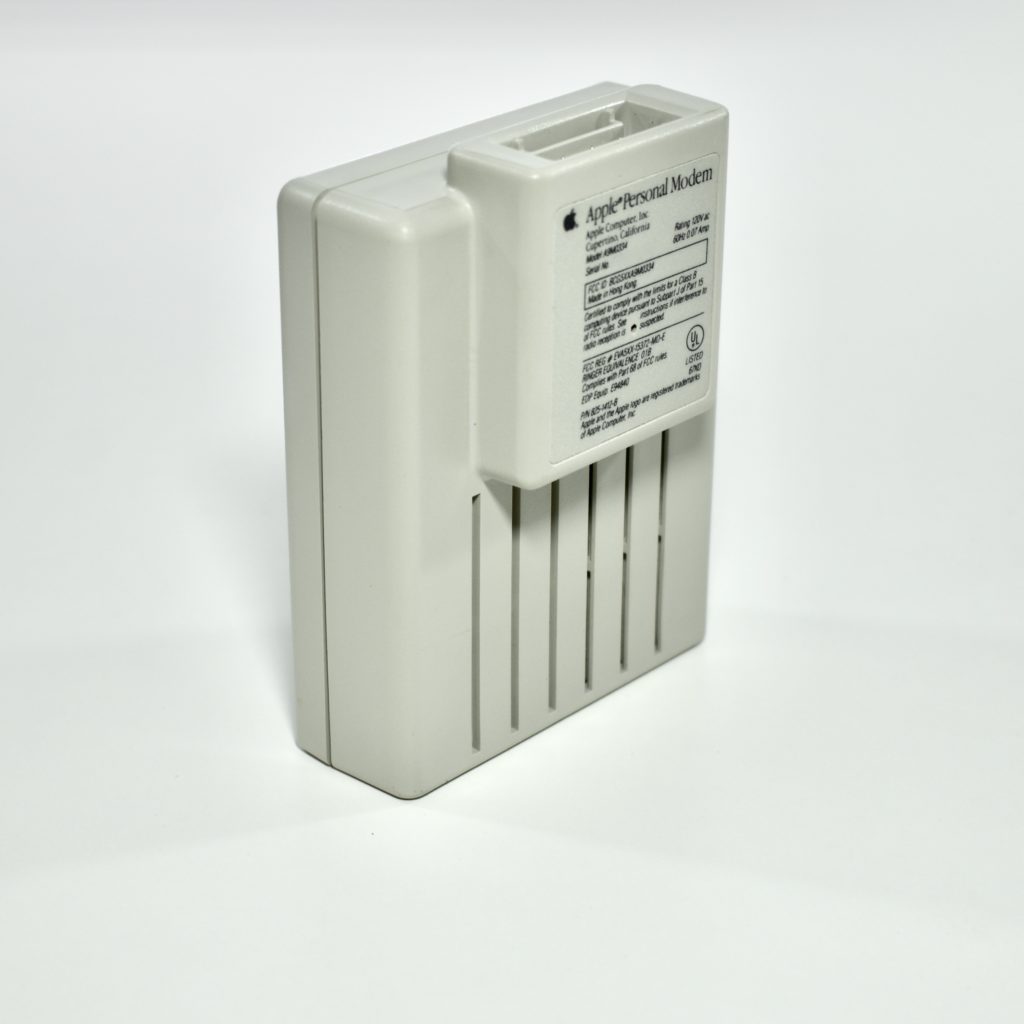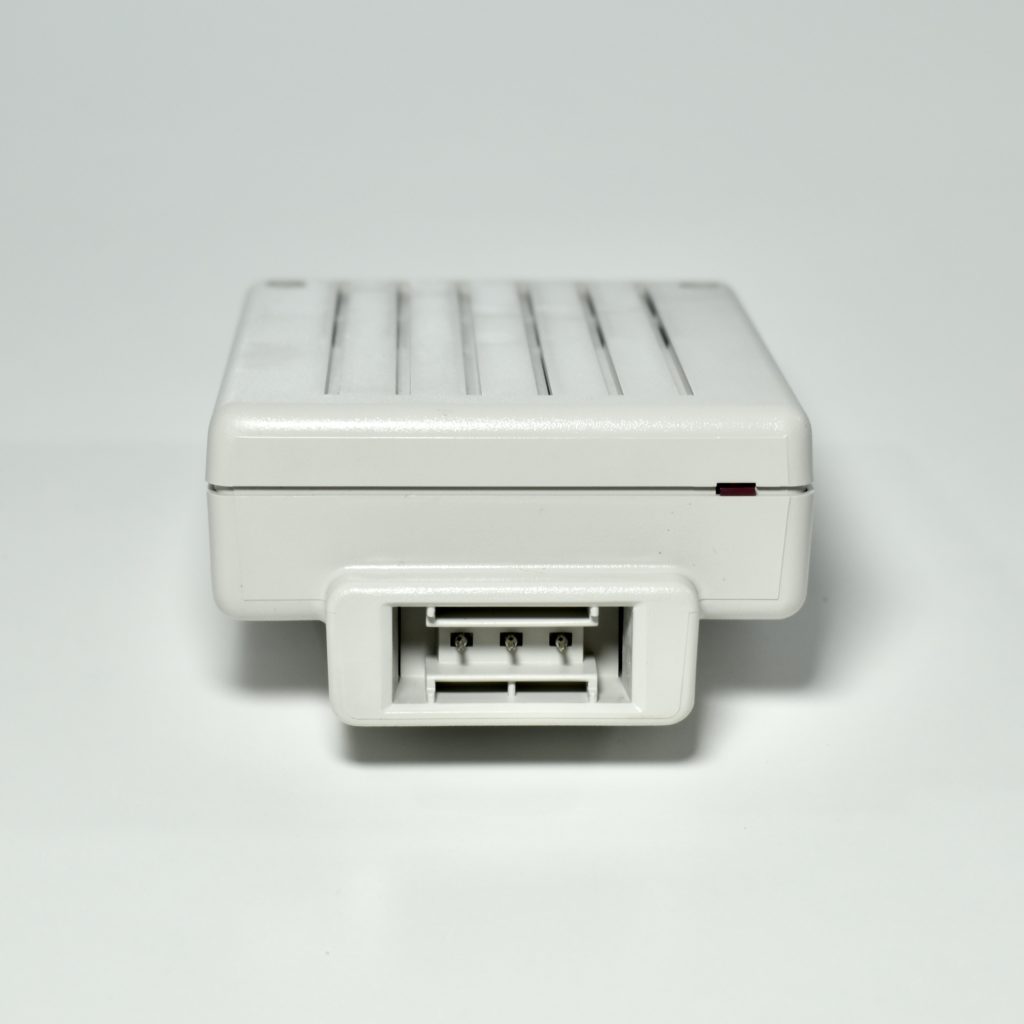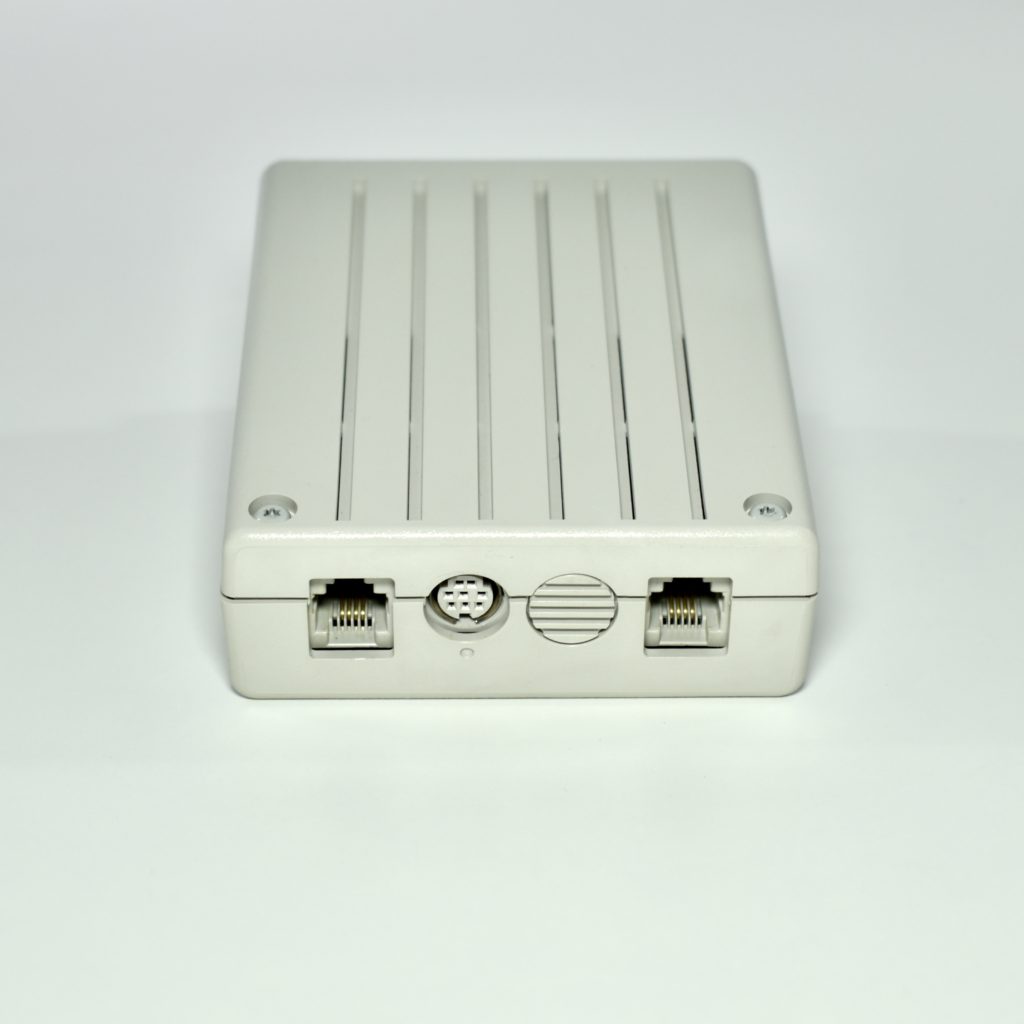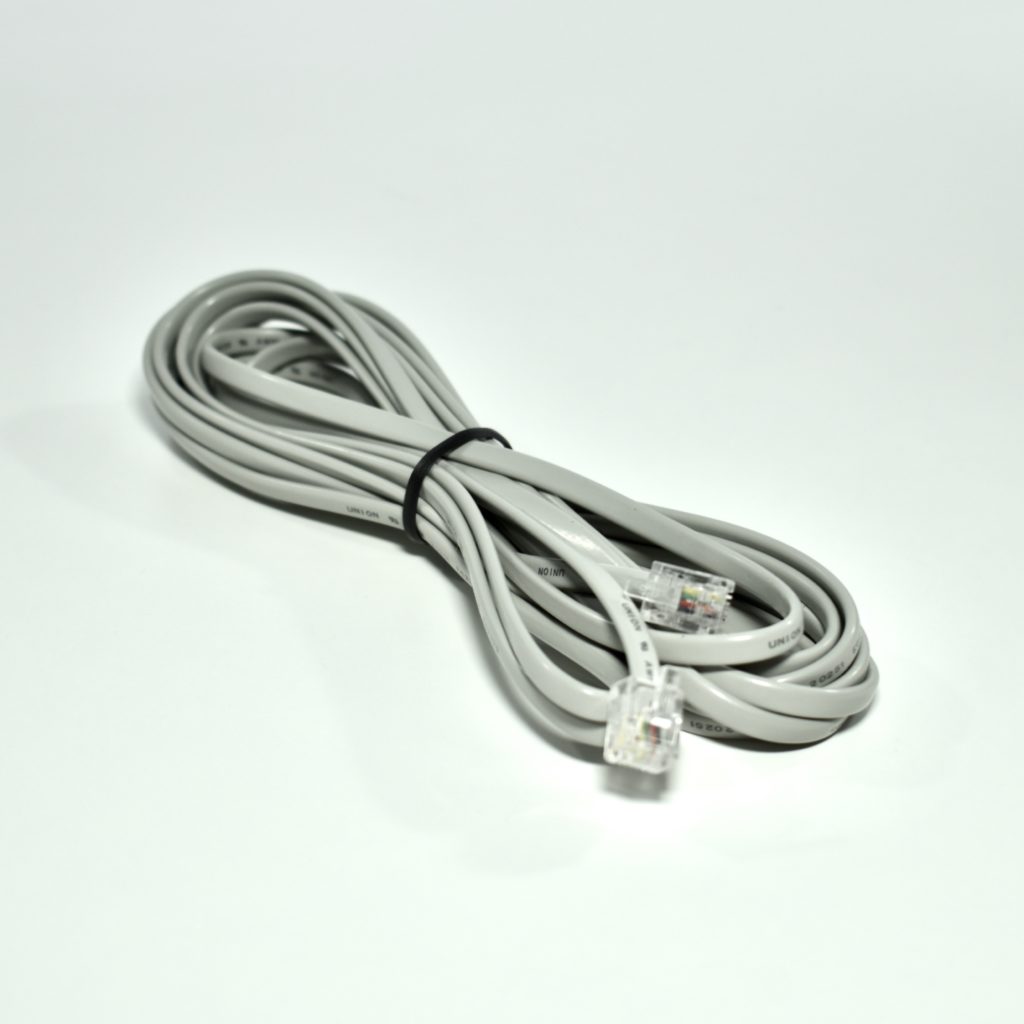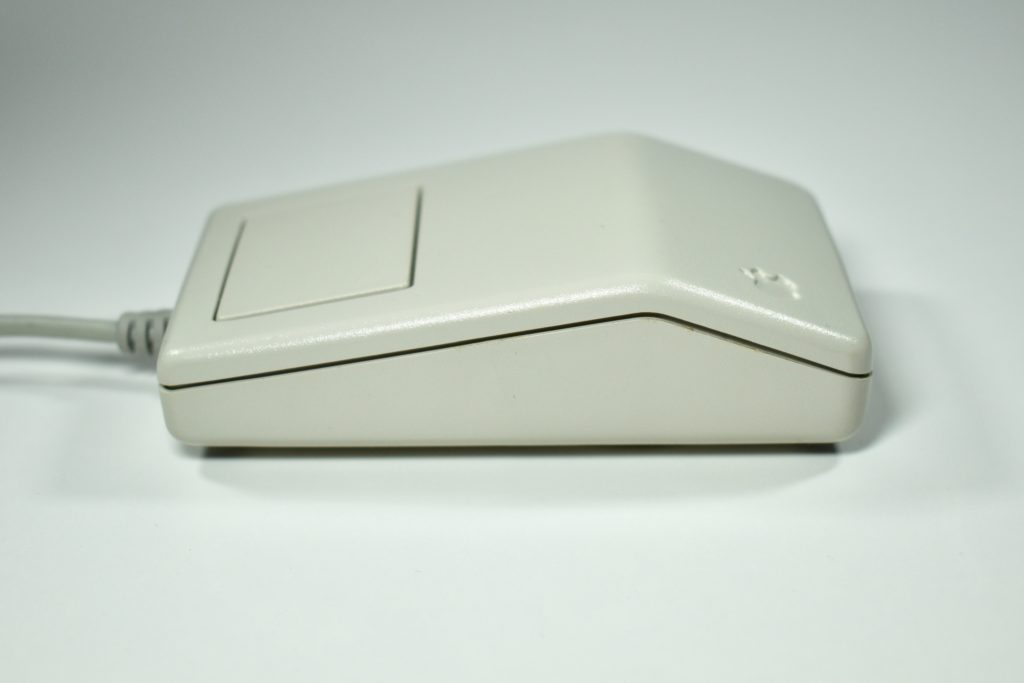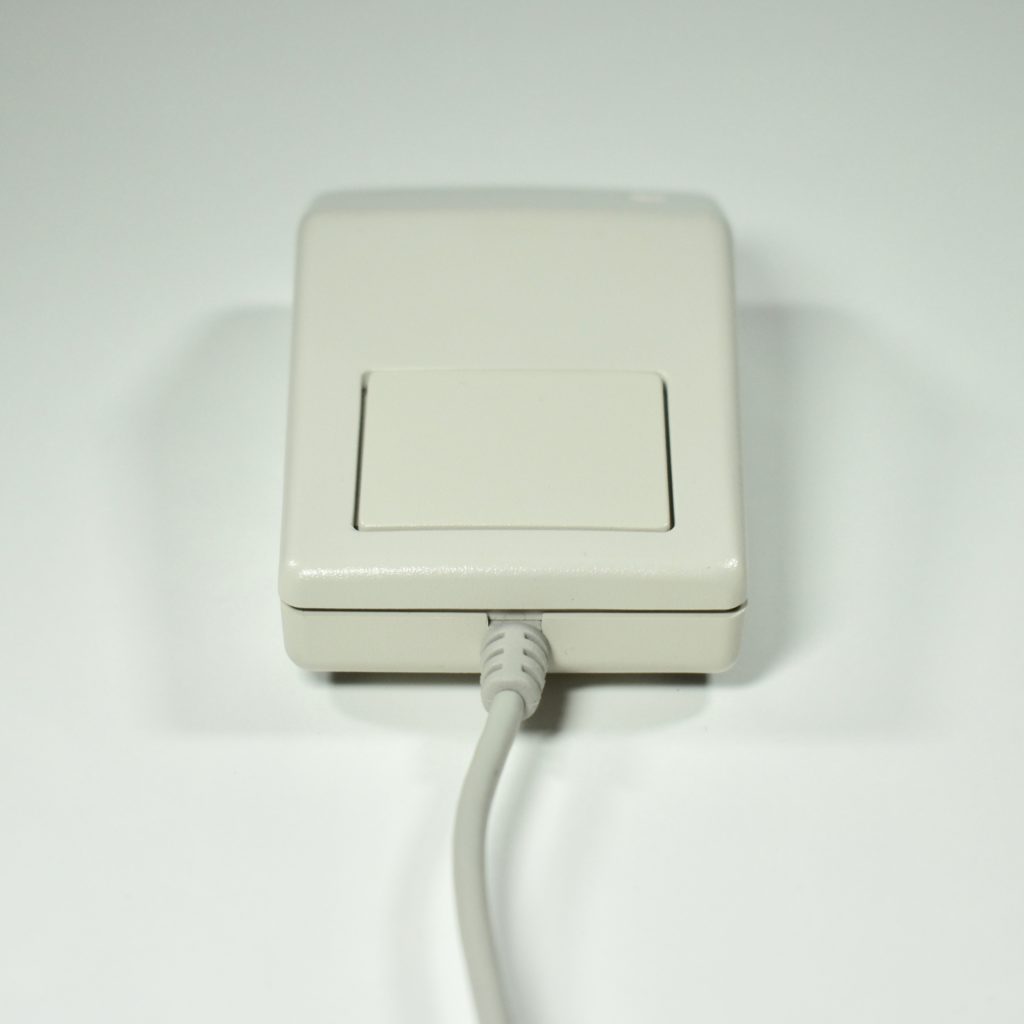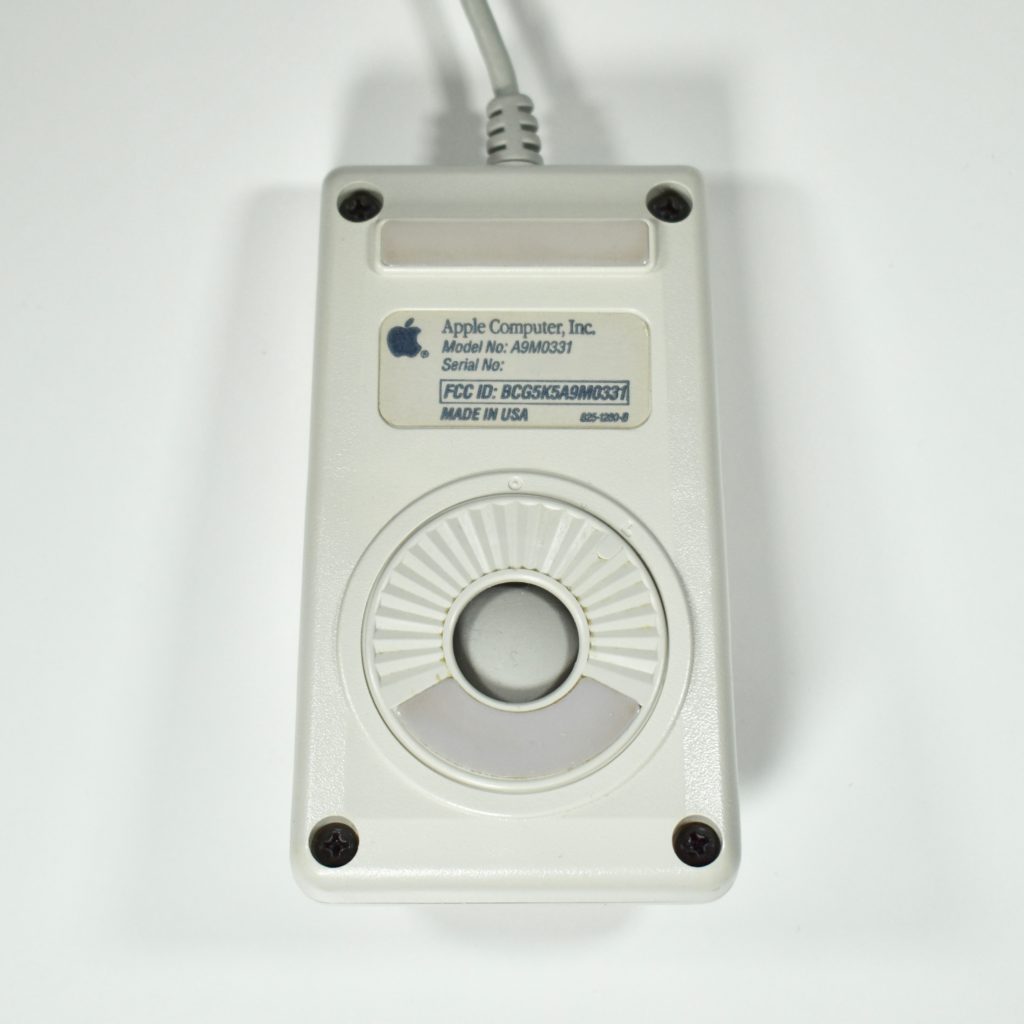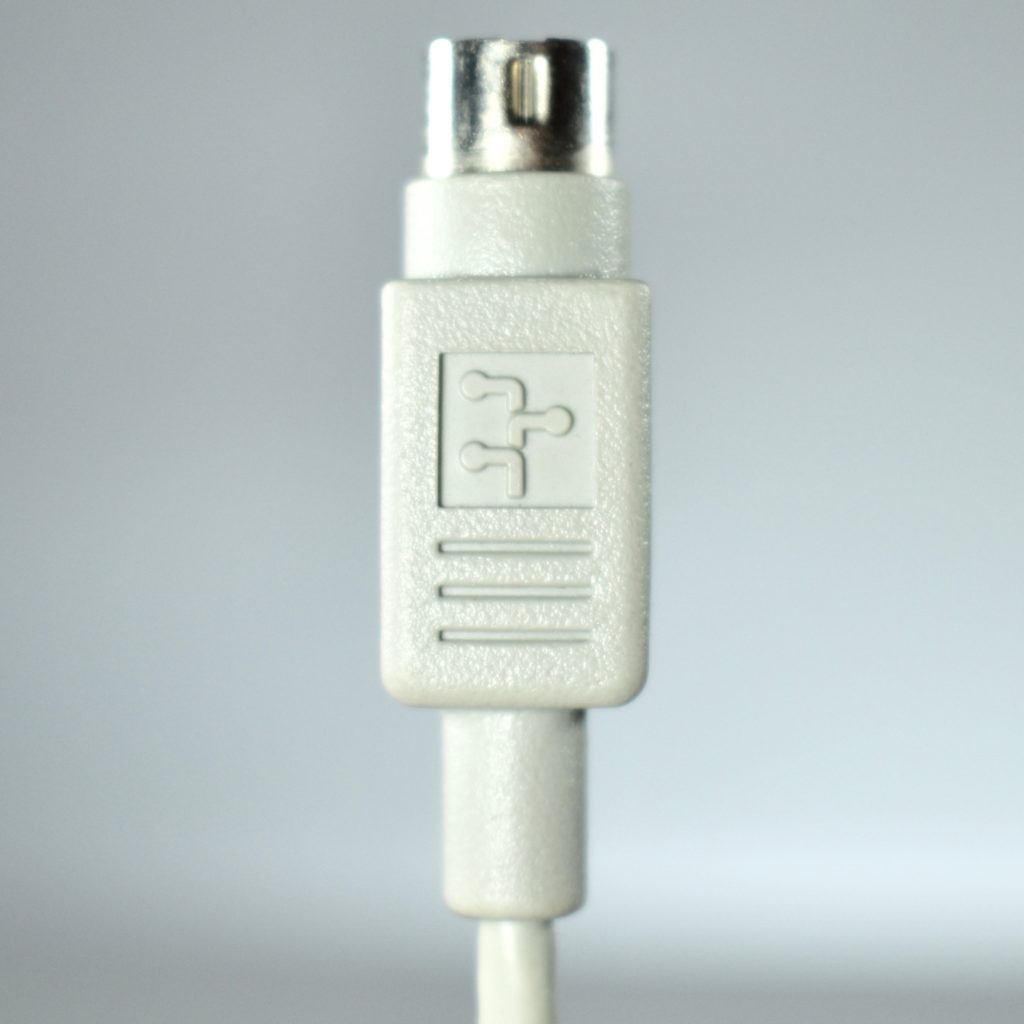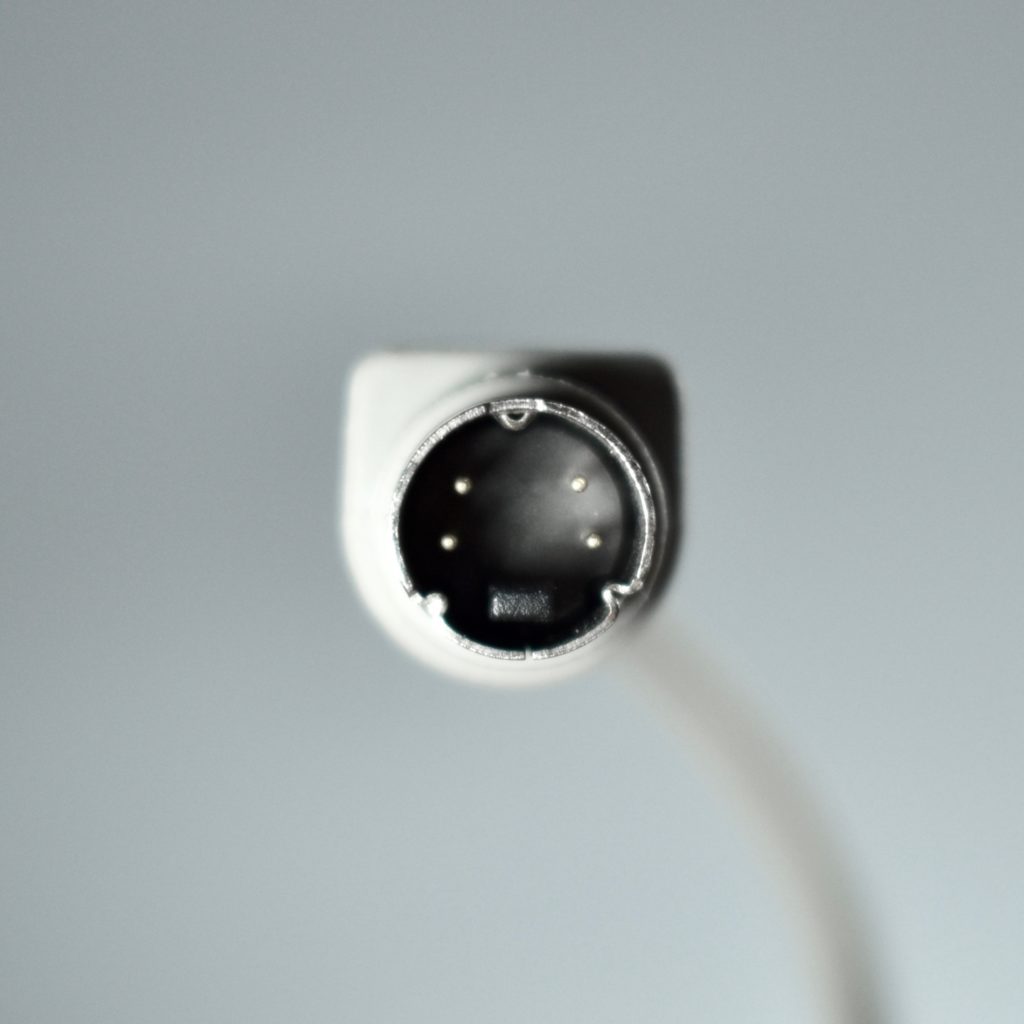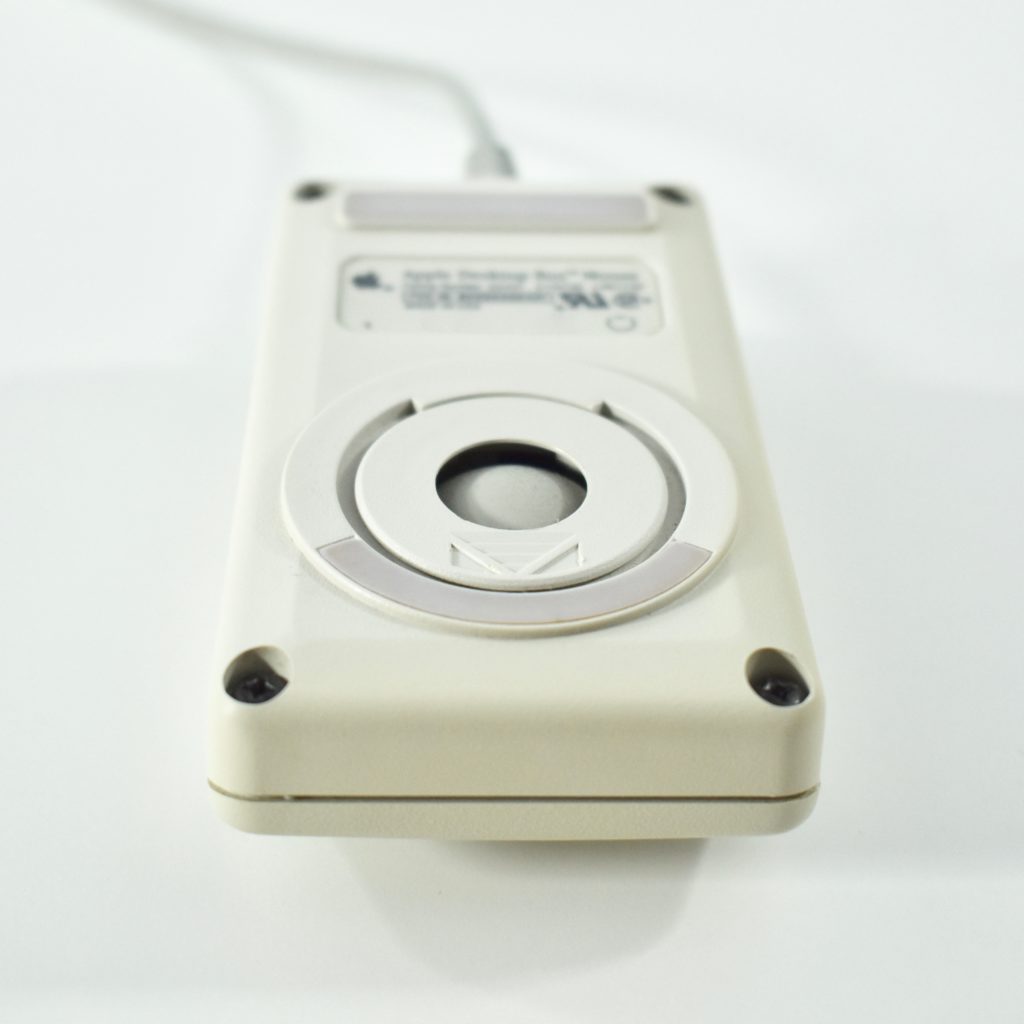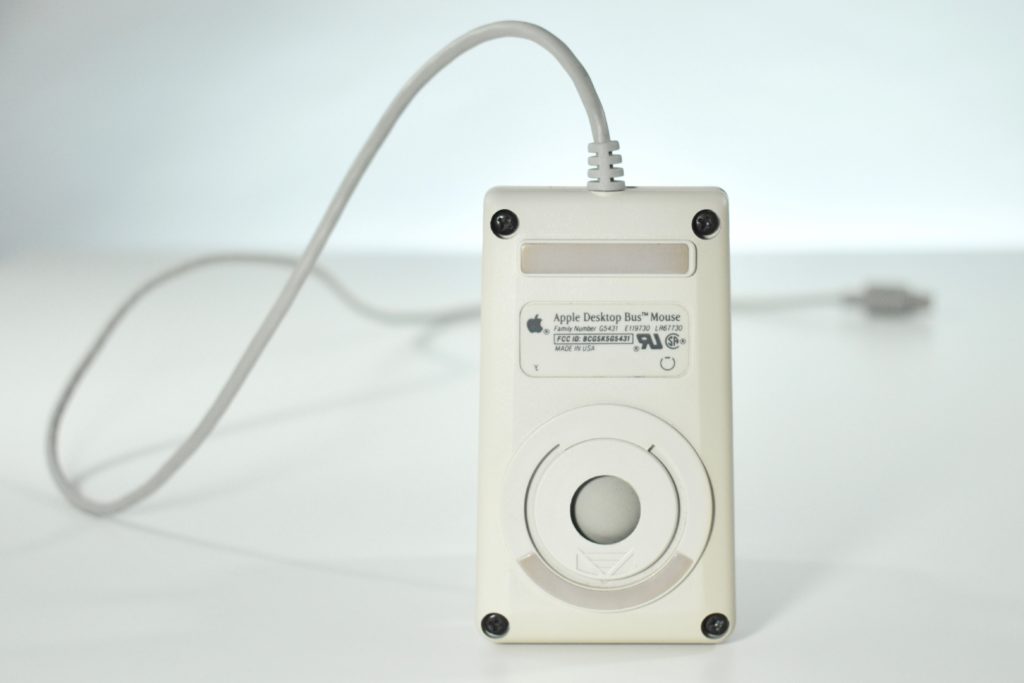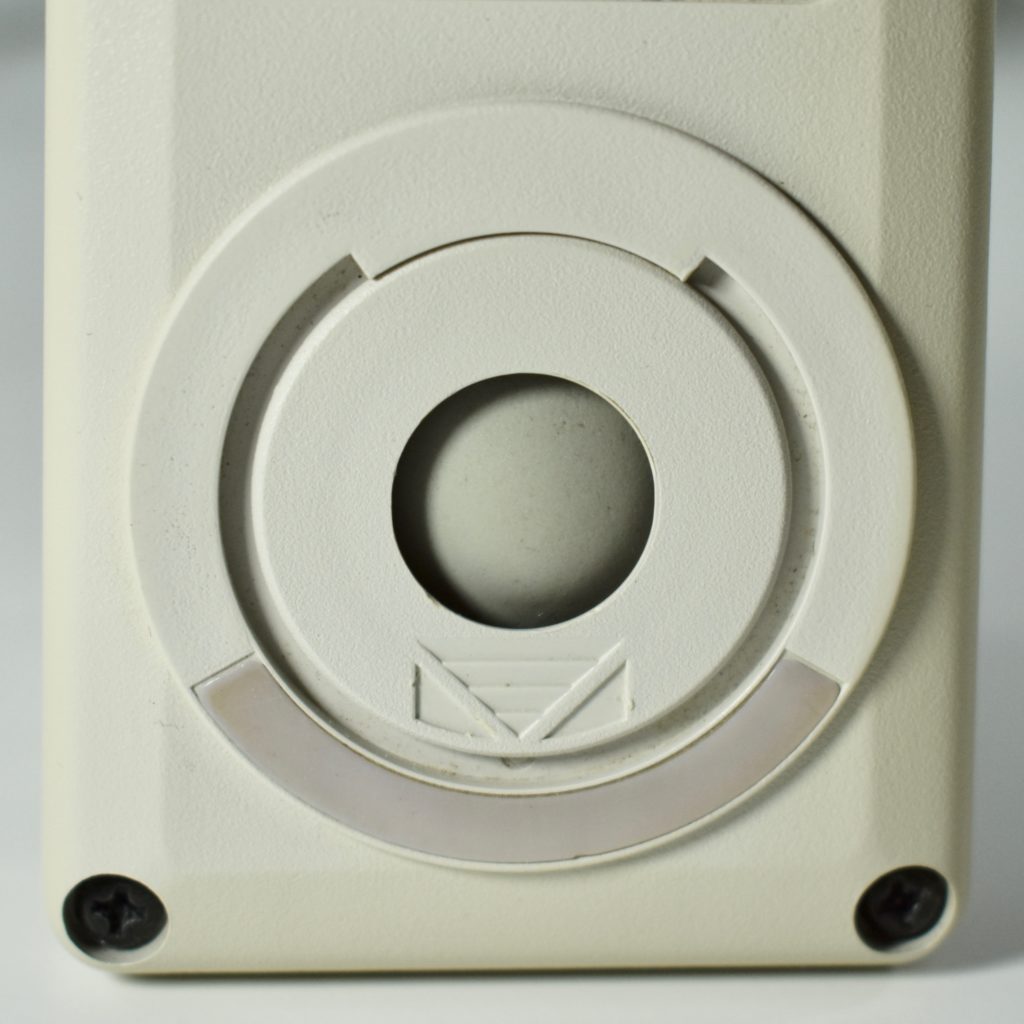The Apple Keyboard was also referred to as the Apple Standard Keyboard and was offered in addition to the lighter and slimmer Apple Desktop Bus Keyboard. The name Apple Keyboard would later be applied to different Apple keyboard designs, but this was the first use of this name.
This Apple Keyboard used Apple Desktop Bus (ADB) connections. The keyboard offered two ADB connections allowing the user to connect an Apple Desktop Bus Mouse to the keyboard (or directly to the back of the computer). This keyboard was both sold separately and included as an option with the Macintosh II and SE in 1987.
This keyboard also included a power button, a feature that would remain on Apple keyboards until the early 2000s. (The original Apple USB keyboard included with the original iMac was the last Apple keyboard to include a dedicated power button.)
This particular keyboard is damaged in the right side, but its performance is not affected.
Source: Wikipedia
